Before video games and smartphones captured the attention of young people, sleepovers were magical nights fueled by sugary snacks, ghost stories, and most importantly—board games that kept us awake far past our bedtimes. These cardboard treasures, often stored in closets or under beds, emerged after dinner to transform ordinary living room floors into battlegrounds of strategy, luck, and uncontrollable laughter. The shared experience of gathering around these beloved games created memories that have lasted decades, forging friendships and family bonds through friendly competition and dramatic victories that still come up at reunions and holiday gatherings today.
1. Monopoly – Where Friendships Were Tested and Banking Skills Honed
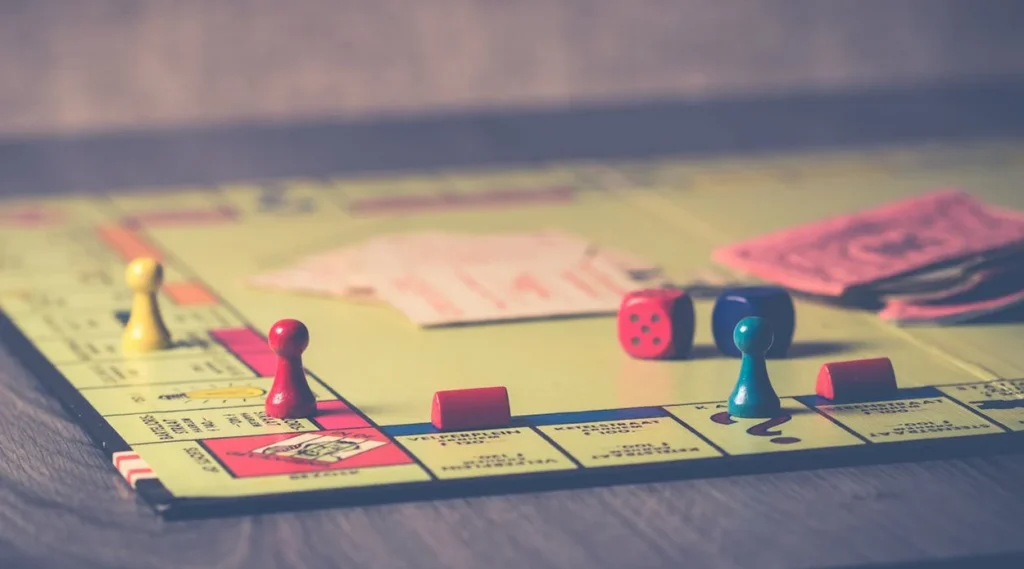
No sleepover game marathon was complete without the ultimate test of capitalism and friendship—Monopoly. The distinctive sound of dice tumbling across the board and the satisfying feel of colorful paper money changing hands created an immersive world where children could experience the thrill of property ownership and the crushing disappointment of landing on Boardwalk with a hotel. Arguments over house rules—like collecting money when landing on Free Parking or whether trading properties was allowed—became heated negotiations that taught valuable lessons about deal-making and compromise. In recent years, Daily Record reported on a McDonald’s iteration of the game making a comeback, reaffirming just how timeless this game is for every generation.
Games famously lasted for hours, sometimes continuing the next morning after brief sleep breaks, with players developing signature strategies that became part of their personality. The banker role carried tremendous responsibility, occasionally tempting even the most honest players to “borrow” from the bank when no one was looking. As properties changed hands and empires rose and fell, winners celebrated with memorable dances while losers often accused others of cheating—creating dramatic moments that remained part of group folklore for years to come.
2. Clue – Murder Mystery Nights Before CSI Was Cool
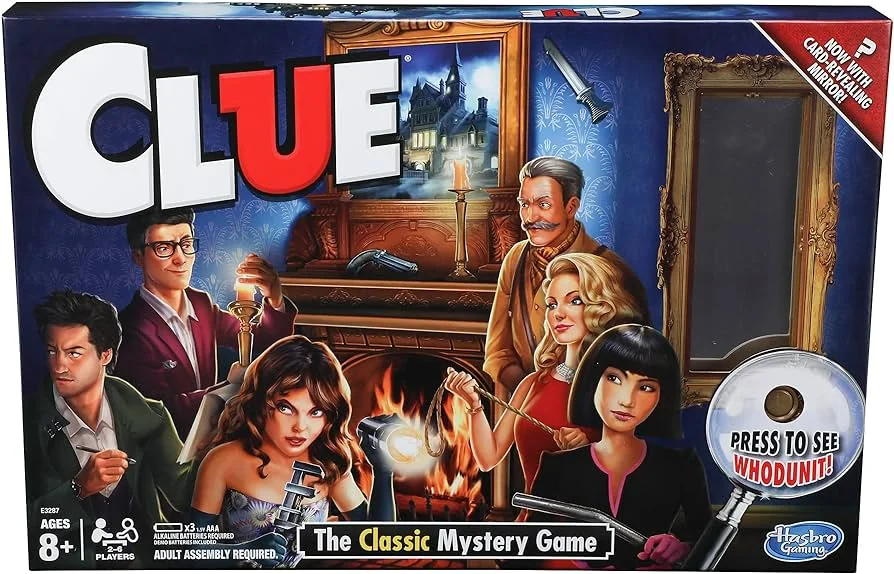
The thrill of solving a mystery made Clue an irresistible sleepover choice, with players adopting the personalities of their chosen characters as they moved through the mansion’s rooms. The secretive process of checking suspicions against cards held by other players created an atmosphere of intrigue perfect for late-night gaming sessions. Young detectives filled out their detective notepads with increasingly elaborate systems of checkmarks and symbols, proudly displaying their deductive reasoning skills when finally announcing, “I believe it was Colonel Mustard in the Conservatory with the Lead Pipe!” History recounts that the origins of Clue are rooted in a tumultuous time in world history.
The game’s atmospheric board—featuring a mansion with distinctive rooms and secret passages—fired imaginations and inspired elaborate backstories for the colorful suspects. The dramatic moment of checking the confidential case file to confirm a solution created heart-stopping tension, with correct accusations celebrated as evidence of superior intellect. Incorrect accusations led to dramatic “deaths” as eliminated players often insisted on acting out elaborate final scenes before surrendering their cards, adding theatrical flair to what was already an immersive experience.
3. Chinese Checkers – Deceptively Simple Strategy for Patient Players
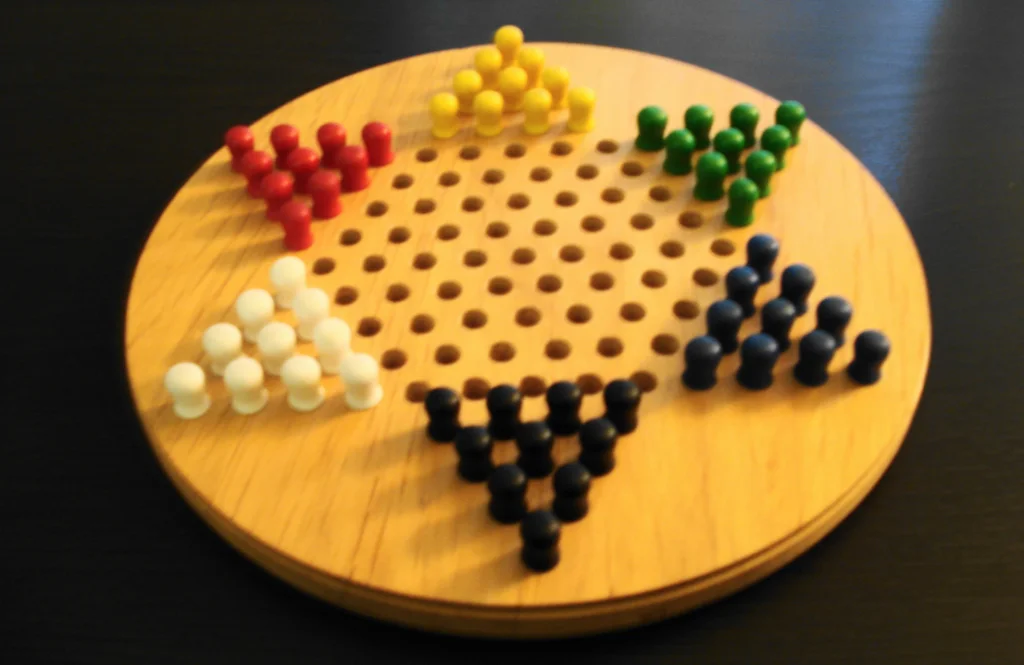
The distinctive star-shaped board with its colorful marbles created an immediate visual appeal that drew sleepover participants to Chinese Checkers. The satisfying click of marbles hopping over one another across the board’s indentations provided tactile pleasure that complemented the strategic challenge. Players developed signature opening moves and recognizable playing styles—some building methodical bridges across the board while others executed aggressive jumping sequences that left opponents scrambling to respond. Masters Traditional Games breaks down the rules, along with some contested rules and situations players might find themselves in.
The game’s relatively quiet nature made it perfect for late-night play when energy began to wane but sleep remained distant. Particularly impressive jump sequences earned immediate respect, with spectators occasionally gasping at unexpected pathways discovered across the crowded board. The game accommodated varying player counts, making it adaptable to sleepovers where attendance fluctuated as children fell asleep or wandered off to other activities. The blend of accessibility and strategic depth gave Chinese Checkers staying power that transcended trends, remaining a fixture in game closets across generations.
4. Twister – When Board Games Got Physical
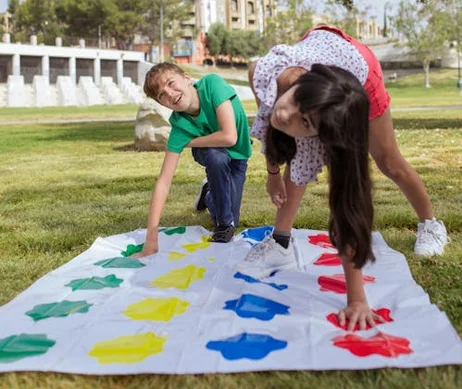
No game transformed sleepovers quite like Twister, which abandoned traditional boards in favor of turning players themselves into the playing pieces. The vinyl mat with its colorful circles spread across living room floors created an immediate sense of anticipation as players removed socks and prepared for the physical challenge ahead. The spinner’s decree—”right hand blue” or “left foot red”—led to increasingly precarious human sculptures that inevitably collapsed into heaps of laughter.
Parents occasionally raised eyebrows at the physical contact inherent in the game, but children recognized it as innocent fun that broke the ice at gatherings where boys and girls might otherwise have stayed on opposite sides of the room. Spectacular falls became legendary sleepover moments, with particularly flexible friends gaining reputations as “Twister champions” that followed them through school years. The game’s brilliant simplicity meant even younger siblings could participate, making it an inclusive activity that united diverse age groups in shared physical comedy.
5. Operation – Steady Hands Required After Midnight
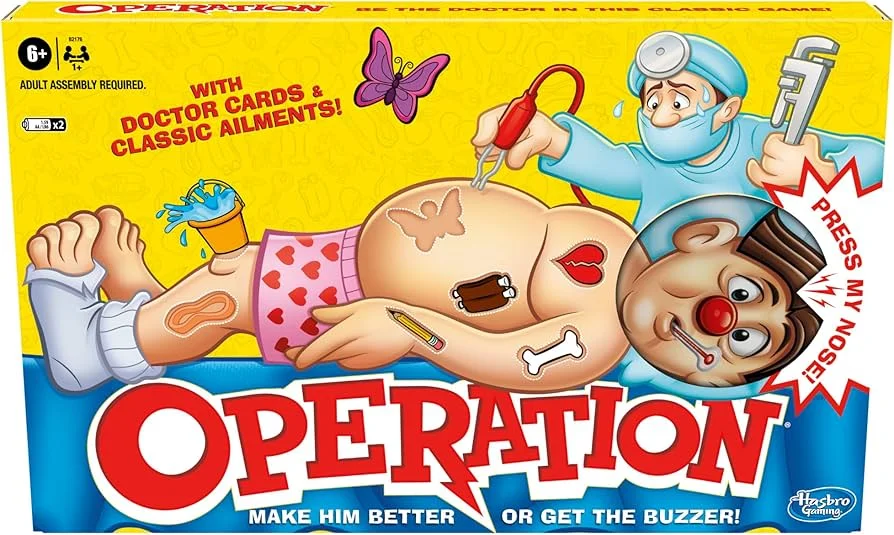
The distinctive buzzing sound of Operation’s metal edges coming into contact with clumsy tweezers could be heard emanating from countless sleepover gatherings. Players crowded around the patient’s glowing red nose, holding their breath as friends attempted to extract the wishbone or broken heart without triggering the alarm. The combination of fine motor skills and nerve-wracking tension created natural drama that had spectators alternating between encouraging silence and distracting commentary.
The game took on new dimensions late at night when sugar-fueled hands became increasingly unsteady, making successful operations nearly impossible as midnight approached. Special recognition went to anyone who could remove the notoriously difficult “writer’s cramp” without fault, earning temporary “doctor” status among impressed peers. The inevitable startling buzz when metal edges touched created jump-scares that triggered contagious laughter, sometimes waking parents who had to remind enthusiastic surgeons to keep their medical practice to a more reasonable volume.
6. Risk – Global Domination Before Bedtime
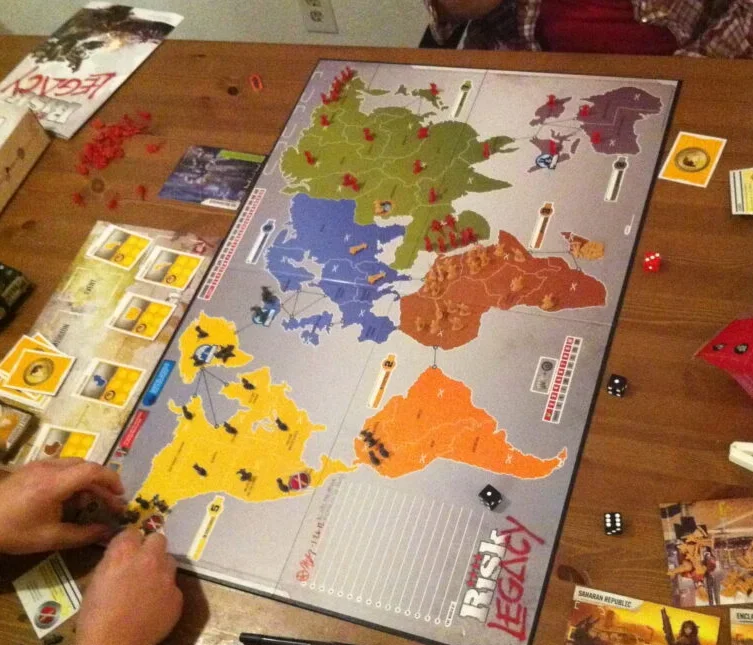
The serious strategists at sleepovers inevitably suggested Risk, unfolding its world map board with a gravity that signaled hours of intense concentration ahead. Distributing armies across continents and forming fragile alliances that everyone knew would eventually be broken created a geopolitical sandbox where friendships were temporarily suspended in pursuit of world domination. The rhythmic rattle of dice determining battle outcomes punctuated passionate speeches about betrayal and territorial ambitions.
The game’s length became part of its legend, with particularly epic battles sometimes continuing until sunrise as determined players refused to concede despite dwindling forces. The inevitable dramatic reversals of fortune—when a seemingly defeated player staged a remarkable comeback from Australia or South America—became the stuff of group mythology recalled years later. Risk taught patience and strategic thinking while creating natural breaks for snack refills and bathroom visits during other players’ lengthy turns, perfectly pacing the overnight adventure.
7. Mystery Date – Hoping for the Dream Date, Dreading the Dud
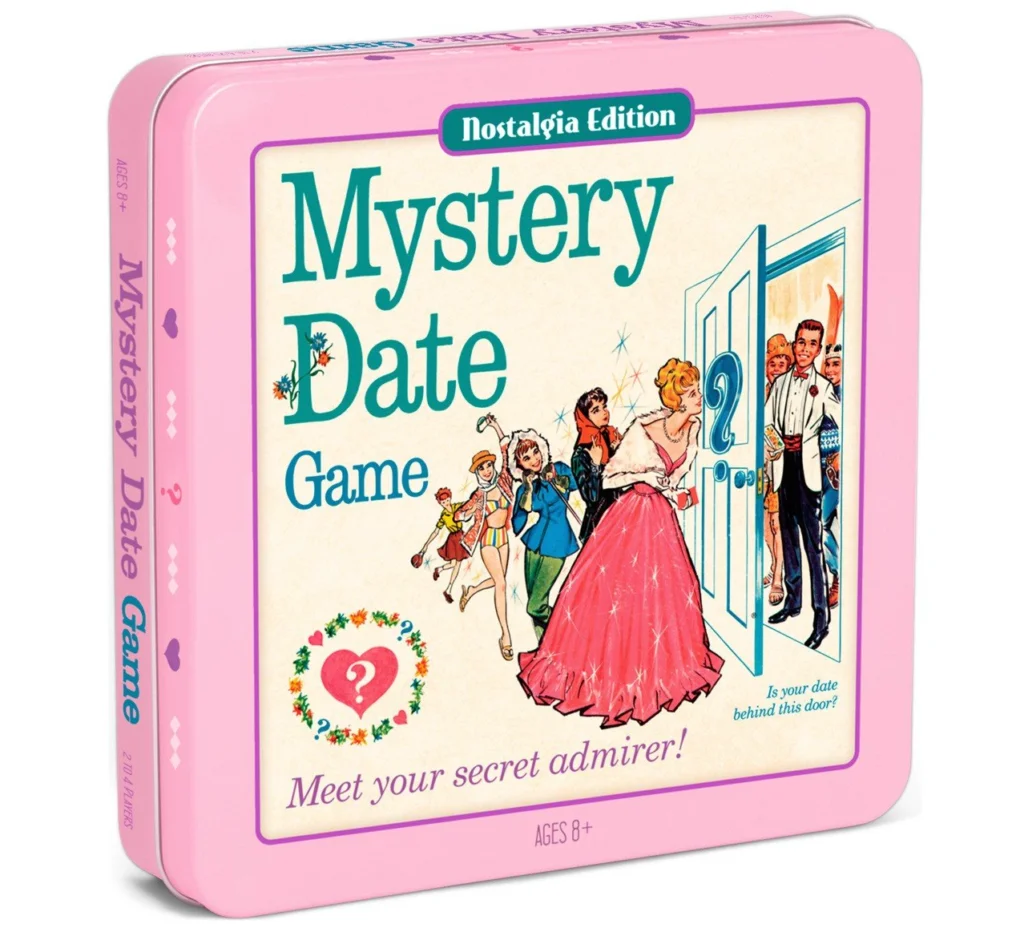
At girl-centered sleepovers, the anticipation of opening the Mystery Date door to reveal the formal dance date or beach buddy created squeals of delight that echoed through suburban homes. The game combined elements of matching outfits with the excitement of romantic possibility, allowing players to express their preferences and personalities through which mystery dates they hoped to discover. The shared horror when someone opened the door to reveal “the dud” created bonding moments of theatrical sympathy.
The game’s premise—preparing for different types of dates by collecting appropriate outfit cards—reflected the era’s social expectations while still providing genuine entertainment through its element of chance. Players developed superstitions about which spaces on the board most frequently led to desirable dates, creating personalized strategies that were passed down to younger siblings. The colorful mid-century artwork depicting various date scenarios sparked conversations about ideal romantic outings that revealed developing values and interests among friends.
8. Mouse Trap – Rube Goldberg Engineering for Beginners

The elaborate construction phase of Mouse Trap made it as much an engineering project as a board game, with players collaboratively building a contraption of diving men, marble ramps, and precarious buckets. The game’s true reward came when the carefully assembled mouse trap actually worked as designed, setting off a chain reaction that culminated in the satisfying capture of an opponent’s mouse. The collective cheer that erupted when all components functioned properly acknowledged the group achievement, regardless of which player benefited.
The inevitable malfunctions became part of the entertainment, with players developing techniques to encourage reluctant components like the notoriously unreliable boot that needed to kick just right to continue the sequence. The game taught patience during the building phase and created natural teamwork before the competitive element began. Parents appreciated the relative quiet as children focused intensely on construction, though this was inevitably followed by excited commentary during each trap attempt, with successful captures recounted in detail to anyone who would listen the next morning.
9. Ouija Board – Forbidden Thrills After Lights Out
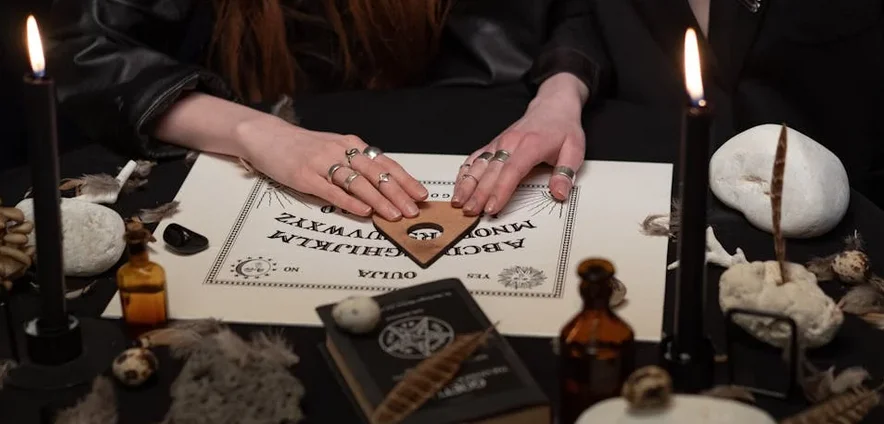
Not technically a board game but a fixture at countless sleepovers nonetheless, the Ouija board emerged after dark to create spine-tingling moments of supernatural possibility. Participants placed fingertips lightly on the plastic planchette, asking questions of invisible spirits while secretly suspecting friends of pushing toward desired answers. The collective willingness to believe—at least temporarily—in communication with the beyond created an atmosphere of delicious fear perfect for late-night adventures.
The inevitable moment when the planchette moved seemingly of its own accord triggered screams quickly muffled by pillows to avoid parental intervention. Sessions often began with silly questions about crushes or school gossip before evolving toward communications with historical figures or deceased relatives. Many parents disapproved of the game’s occult associations, making its appearance from someone’s overnight bag a slightly rebellious act that added to its appeal. The shared experience of controlled fear—knowing the rational explanation but choosing to enjoy the mystery—created powerful bonds strengthened by dramatic retellings of particularly unexplainable moments.
10. Sorry! – Where Apologies Were Anything But Sincere

Few phrases at sleepovers were delivered with less sincerity than the gleeful “Sor-ry!” that accompanied sending an opponent’s piece back to start. The simple gameplay—drawing cards to move pieces around the board—made it accessible even to younger participants or those tired from hours of gaming. The strategic choices of which piece to move and which opponents to target revealed alliances and grudges from earlier interactions, with revenge moves planned several turns in advance.
The game’s brilliant simplicity concealed its emotional complexity, as players experienced the full range of triumph and devastation with each card draw. Drawing the coveted Sorry! card created moments of delicious anticipation as players surveyed the board for maximum impact, often accompanied by villainous laughter. The game’s relatively quick playtime made it perfect for “just one more before bed” that inevitably turned into three more rounds as winners demanded rematches and losers sought redemption.
11. Candy Land – Sweet Journeys for All Ages
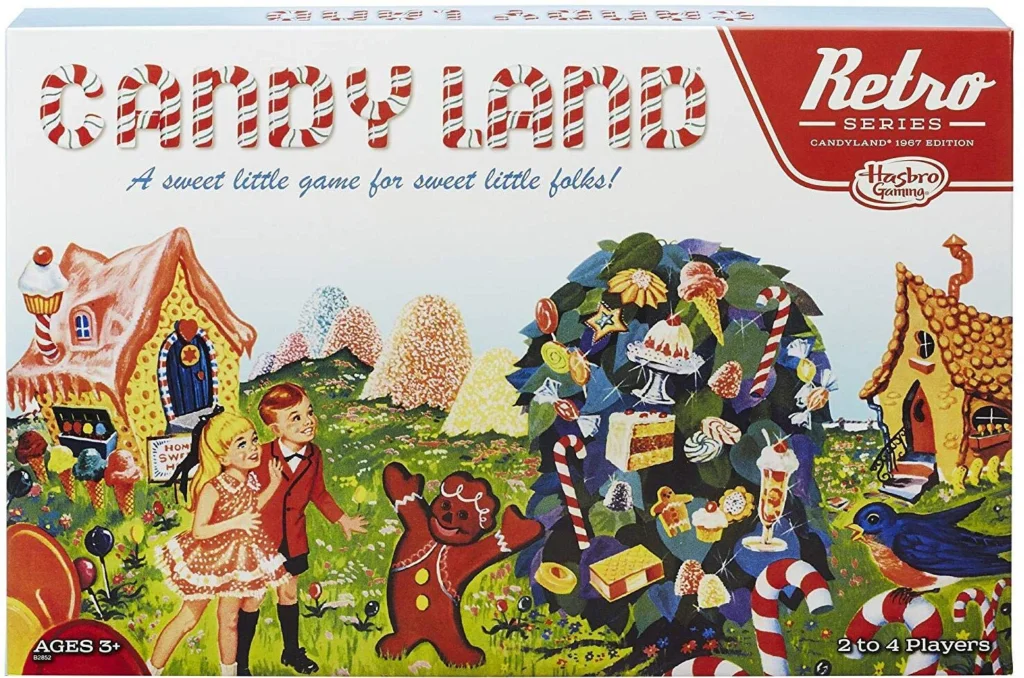
Though often considered a game for younger children, Candy Land maintained its place in sleepover rotations because of its colorful world and the nostalgic joy it brought to players of all ages. The journey through Peppermint Stick Forest and past Gumdrop Mountain created a shared imaginative experience that required no reading or complex strategy, making it inclusive for diverse age groups often present at family gatherings and neighborhood sleepovers. The simple pleasure of moving gingerbread game pieces through a land of treats captured imaginations while creating genuine competition through its card-drawing mechanism.
Landing on special character spaces became moments of triumph or disaster, with Queen Frostine’s ice cream palace representing a coveted shortcut while the sticky Molasses Swamp created dramatic setbacks that tested good sportsmanship. The game’s whimsical artwork inspired imaginary taste-testing, with players debating which candy locations would be most delicious to visit in real life. The accessibility of the game made it a perfect starting point for evening game marathons, warming up players for more complex challenges to come while ensuring everyone began the night with a positive experience.
12. The Game of Life – Planning Adulthood One Spin at a Time

Life offered sleepover participants a glimpse into their future with plastic cars filled with tiny pink and blue pegs traversing a winding path of career choices, marriages, and unexpected setbacks. The distinctive clicking sound of the central spinner created a soundtrack for important life decisions as players chose between college paths or immediate employment, celebrating paydays and commiserating over unexpected expenses. The game’s three-dimensional board with its mountains and bridges transformed the flat playing surface into a miniature world that captured imaginations.
Players projected their actual hopes and dreams onto their plastic car’s journey, expressing genuine disappointment when life events didn’t go as planned or celebrating fortunate spins with victory dances. The retirement options at the end—Millionaire Estates or the humbler Countryside Acres—created final moments of suspense as players counted their accumulated wealth to determine lifetime success. Morning conversations often included references to particularly lucky or unfortunate life events from the previous night’s game, with “Remember when you had twins three times?” becoming part of the shared language of friendship.
These beloved games did more than just pass time—they created shared references and inside jokes that cemented friendships through years of growing up together. Today, introducing these classics to a new generation offers more than nostalgia; it provides a window into a time when entertainment was inherently social, requiring face-to-face interaction and creating emotional connections through shared experiences. While today’s sleepovers might include digital diversions, there’s something magical about watching children discover these timeless games for themselves, creating their own memories around the same boards that once captivated us.


